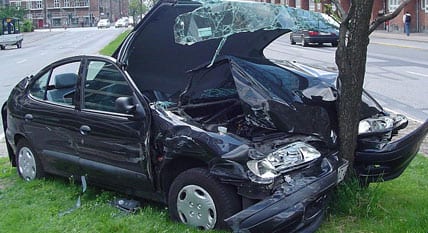Many times accident victims get less compensation than they should. Here’s why.
When you have an accident and the other party is at fault, it is the other party’s insurance company that covers the costs. Making sure that the insurance company pays fair compensation is our job.
If the negligent driver that hit you does not have insurance, you cannot collect any damages unless you have uninsured motorist insurance. That is why we always recommend buying top limits of the very affordable uninsured motorist coverage.
Many victims get upside down on their vehicle loss. The right GAP (Guaranteed Auto Protection) insurance will protect you:
• GAP insurance covers the cost differential between what you owe on your car and the fair market value.
It is a known fact that as soon as you drive your new car off the lot it decreases in value and continues to do so. You can check the rate of depreciation for your car here. On the other hand, your car loan amount decreases in smaller increments as you pay off the promissory note. Obviously, the newer your car, the bigger the loss if it is totaled or stolen. In these cases, the loan company will get the fair market value paid to them, and you will pay your remaining balance, less the fair market assessment price.
For example, if you have paid two out of five years’ payments on the car (40%), but the car has lost half its value via depreciation (50%), you will end up eating the 10% difference if you do not have gap insurance.
What you may not realize is that a similar situation exists with leased cars. In the case of a leasing agreement, you are also obligated to meet a payment schedule, whether or not the car is totaled or stolen. The lease agreement, like your auto loan promissory note, is a payment you are obligated to make according to the contract you have signed. For this reason, many leasing companies require the purchase of GAP insurance in their contracts.
The main reasons to consider GAP insurance are:
• A long-term loan: your car will depreciate faster than your accrued payments’ total value
• You made a large down payment on your purchase: about 20% of the total or more
• The car model you bought has an accelerated rate of depreciation compared to other cars
• You use the car in a way which puts more wear and tear on it than usual—e.g. carrying work equipment or extensive travel mileage.
As with every type of insurance, it is up to the consumer to do his or her homework to get the best rates and terms. Not all coverage is the same, and some insurance companies offer better prices and better coverage. In some cases your note or rental contract already will include GAP coverage. You have the right to refuse the “pre-packaged” GAP coverage in an agreement, and instead shop for a better policy. GAP coverage may be offered by the lending institution, the auto dealership, or your car insurance provider.
For your information, from Stillman and Friedland, because we care.







